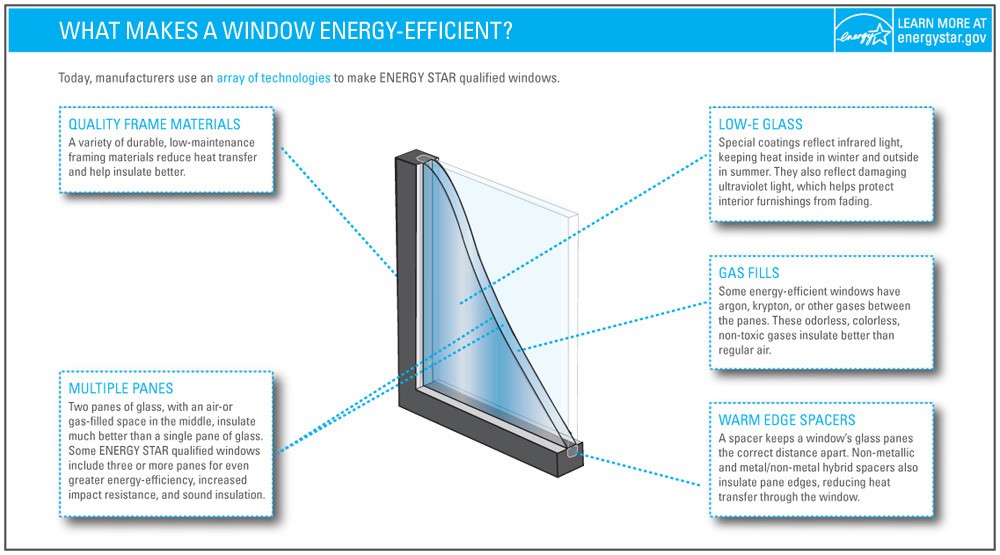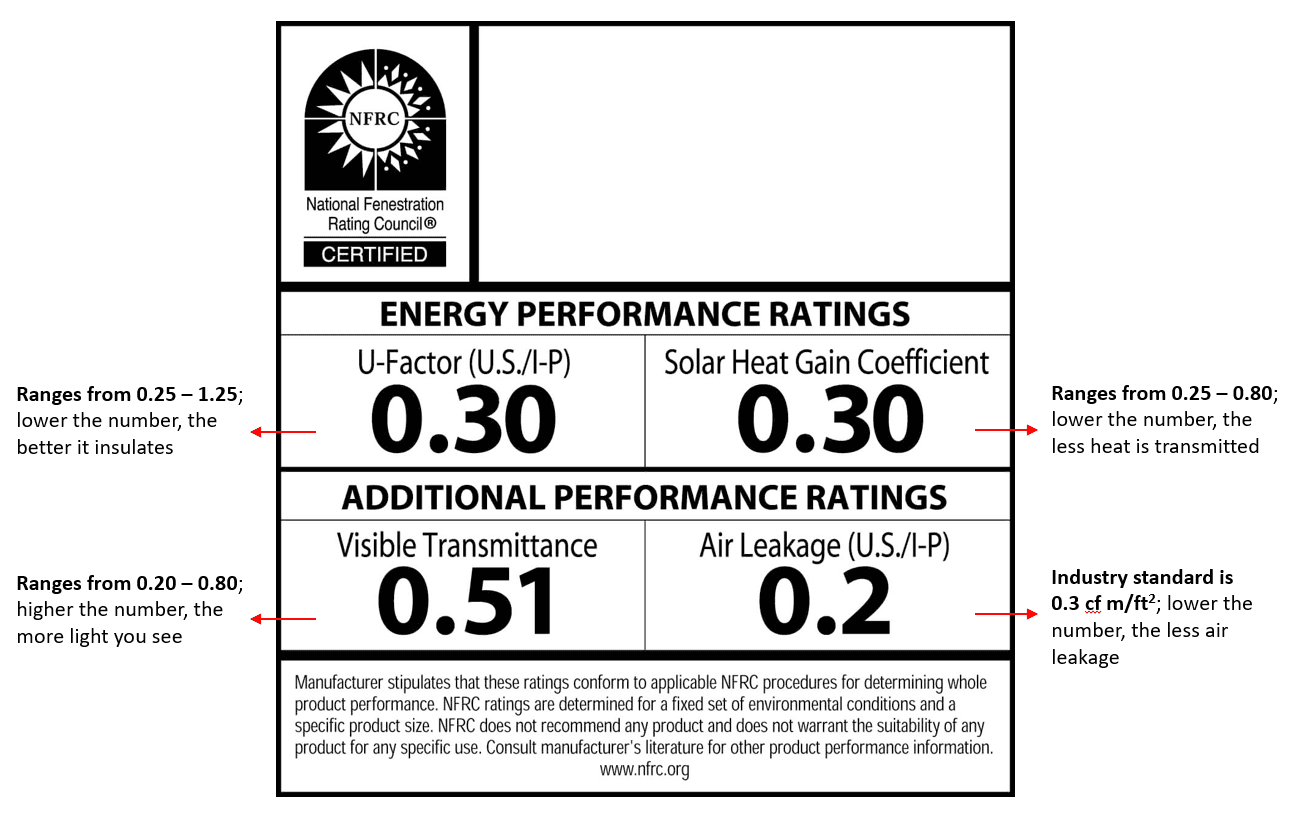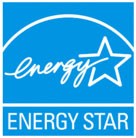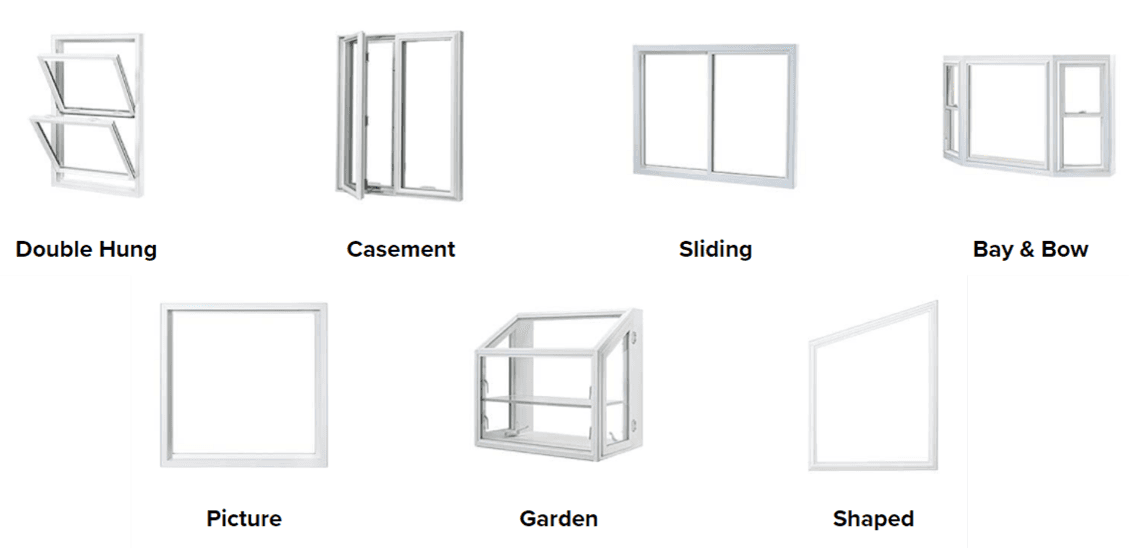Energy efficient windows help homeowners save money on utilities while also protecting the environment. Replacing old, drafty windows can also improve property values, increase comfort in the home and can even improve the beauty of the home's interior and exterior.
Shopping for energy efficient windows can be a challenge. Knowing what to look for, what to prioritize and how to judge the quality of a product is important. This guide is designed to help homeowners who are beginning the task of purchasing quality energy-efficient windows for their home.
Here are the factors every homeowner should know and what we will cover:
- What Are the Benefits of Energy Efficient Windows?
- What Makes a Window Energy Efficient?
- How is Energy Efficiency Measured?
- What Are Energy Star Ratings and Energy Performance Ratings?
- What Is Low-E Glass and How Does It Help?
- What Terms Do You Need to Know When Buying Energy Efficient Windows?
- How Does the Number of Panes (Single, Double, Triple) Impact the Window's Energy Efficiency?
- Comparing the Energy Pros and Cons of Each Window Type?
- Are Energy Efficient Windows Also Soundproof?
- Why Is Window Placement Important?
- Why Is Professional Manufacturing and Installation of the Window Important?
- What Are the Costs of New Energy Efficient Windows?
- How Much Can I Expect to Get Back When I Sell?
What Are the Benefits of Energy Efficient Windows?
Energy efficient windows have many benefits. For example:
- Reduce heating/cooling bills. Save as much as $460 per year on energy-related utilities (1, 2).
- Reduced carbon footprint. Carbon emissions reduced with energy-efficient windows.
- Improved comfort throughout the year. Eliminate temperature fluctuations throughout the year (3).
- Improved property value. Delivers around 70% ROI for homeowners.
- Better ability to protect furnishings. Protect the furnishings and fabrics in the home from damaging UV rays (4).
- Increased light and view. Clearer views with lower solar heat gain (5).
These benefits help improve homeowner quality of life, and can even make selling the home easier and more profitable (6, 7)
What Makes a Window Energy Efficient?
Several factors play a role in making a window energy efficient. This illustration from energystar.gov points out which factors to pay attention to (8):

How is Energy Efficiency Measured?
Conduction of heat flow, resistance to heat flow, solar heat gain and air leakage are all measured when gauging a window's energy efficiency.
- R-value is a window's resistance to heat flow. This measurement is applied to parts of the window like the center of the glass and the frame. The higher the number in an R-value scale, the better the product (9).
- U-factor is the conduction of the flow of heat. The scale for U-factor runs from zero to 1. Lower numbers are better, especially in climates where there is a big difference between the temperature inside and the temperature outside (10).
- Solar heat gain coefficient is a window's ability to block heat-producing rays. Solar heat gain coefficient is based on a scale of zero to 1. Like with U-factor, lower numbers are better. A low solar heat gain coefficient (SHGC) number is especially important in hot-weather climates where most home energy usage is spent on cooling (11).
- Air leakage is measured in cubic feet-per-minute, with lower numbers signifying less air leakage. Today's windows tend to be highly leak resistant (12).
- Visible Transmittance indicates the visible light transmitted through windows. A high visible transmittance is desired and most values fall within 0.20 and 0.80 (13).
A National Fenestration Rating Council (NFRC) label provides this key information:

When comparing windows to one another before making a purchase, check R-value and U-factor measurements. A good way to think of the relationship between the two is that U-factor is a reciprocal value of the R-factor. For, example, a window with a R-factor of 3 is equivalent to a U-factor of 0.3. No two windows are created equal, even among windows that are marketed as energy-efficient. Paying attention to labels and product specifications can help set good products apart (14, 15, 16).
What Are Energy Star Ratings and Energy Performance Ratings?
The United States ENERGY STAR program sets standards for energy-efficient home appliances and fixtures. ENERGY STAR ratings for windows and skylights vary by climate zones, because different climates present different home heating and cooling challenges.
ENERGY STAR products must meet three criteria in order to be rated by the ENERGY STAR program (17):
- Must be produced by an ENERGY STAR partner,
- Must have ratings that meet the strict guidelines set by the EPA, and
- Must be tested and certified by the National Fenestration Rating Council.

Look for this logo to know you are purchasing windows that are ENERGY STAR certified and feel assured that the home will be energy efficient and comfortable throughout the year (18).
What Is Low-E Glass and How Does It Help?
Low-e coating is a layer of metallic oxide that allows natural light into the home while controlling radiant heat and blocking the entry of UV rays. Low-e coatings are invisible, so windows with low-e glass do not look different from other windows (19, 20).
Benefits of Low-E coating:
- Keeps the heat in your home during the winter and prevents the damaging UV rays from entering during the summer
- Can prevent carpets and couches from fading in intense sunlight and
- Can dramatically reduce the amount of heat that enters the home during the summer.
- Can help keep your home comfortable while also dramatically improving your home energy efficiency.
What Terms Do You Need to Know When Buying Energy Efficient Windows?
Sometimes, shopping for energy efficient windows can be intimidating. Homeowners often encounter a variety of unfamiliar terms on labels and in product descriptions. Unfortunately, these words often mean little to consumers. Below are some of the terms you are likely to encounter when purchasing energy efficient windows:
- R-value is the resistance to heat flow of a window or door (21).
- U-factor is the conduction of the flow of heat.
- Solar heat gain coefficient (SHGC) is a window's ability to block heat-producing rays.
- National Fenestration Rating Council (NFRC) is a third-party nonprofit organization used by the ENERGY STAR program to rate products for energy efficiency.
- ENERGY STAR is a program run by the EPA to help consumers buy energy efficient products, save money and protect the environment.
How Does the Number of Panes (Single, Double, Triple) Impact the Window's Energy Efficiency?
Double and triple pane windows provide layers of insulation between the air in the home and air outside the home. The energy efficiency of a window increases with each pane of glass that is installed. Single-pane windows are very inefficient and have an R-value of about 1. Untreated double-pane windows have an R-value of 2.1, and untreated triple-pane windows have an R-value of 3.2 (22).
Further treating the window (for example, with a low-e coating) can help improve the R value of a double pane or triple pane even more.
Comparing the Energy Pros and Cons of Each Window Type?
Homeowners who go shopping for new windows will soon discover that there are many different types of windows available on the market. Each window type has a different design that can affect its energy efficiency. Some of the most common types of windows on the market include:
- Single hung windows consist of two sashes, one unmovable sash on top and one moving sash on bottom. Because the upper sash is fixed to the frame, single hung windows tend to be more air tight than some other types of windows.
- Double-hung windows consist of two moveable sashes that slide on individual tracks. Double-hung windows meet the same energy requirements as single hung windows but may become more energy inefficient with time because moveable sashes can more easily become loose in their tracks.
- Picture windows are among the most energy efficient style of window because they are not designed to open. This leaves little chance for air leaks. Treating picture windows with a low-e or other special coating can help improve the window's efficiency.
- Casement windows swing open on hinges and are opened and closed via a crank. Casements are the most energy efficient windows that can open and close. Casements are designed to seal tightly when closed and can even be sealed more tightly when harsh winds push on the exterior of the home. Keeping the seal clean around the window is important, because this helps ensure that the window can be closed fully.
- Sliding windows. Sliding windows can slide left or right on a track. Sliding windows have a flexible seal, which makes them less energy efficient than casement windows and more comparable to double and single-hung windows in efficiency.
- Bay or bow windows. Bay and bow windows provide a lot of light by projecting out away from the house. Bay and bow windows often have moving parts. Some bay windows are made of casements, others are made of single or double-hung windows. Bay and bow types can be very efficient as long as quality materials are used and the windows are properly maintained.

No matter what window type is installed, homeowners must remember that good maintenance makes a big difference in the energy efficiency and performance of the window. Windows that are poorly maintained may degrade with time. Talk to your window installer at the time of purchase to find out how to maintain the energy efficiency of your windows (23, 24).
Are Energy Efficient Windows Also Soundproof?
Energy efficient windows and soundproof windows are two different things. Soundproof windows can be made energy efficient, but energy efficiency is not a guarantee they are soundproof. Homeowners who wish to purchase soundproof windows for their property should shop for soundproof windows, and if energy efficiency is also important, then this should be discussed when talking to window installers. Low-e coatings and other features can help make soundproof windows more energy efficient (25).
Why Is Window Placement Important?
The amount and type of light let into the home is dramatically influenced by the placement of the window. South- and west-facing windows allow the most direct light into the home, while north- and east-facing windows allow the least light into the home (26).
Homeowners who wish to block the entrance of UV rays into the home and who are only interested in replacing a few windows should focus on replacing windows in the south- and west-facing portions of the home. Homeowners who build new homes may wish to limit south and west-facing windows, while maximizing placement of north- and east-facing windows, to cut back on heat transmission into the home.
Why Is Professional Manufacturing and Installation of the Window Important?
Installation plays a huge role in the energy efficiency of the window. Poor installation can lead to air leaks and even moisture leaks that become more dramatic with time. Moisture leaks can lead to rot which can further degrade the insulating properties of the area surrounding the window.
Quality manufacturing is also important. Poor quality windows will degrade with time. Windows that become loose and leaky shortly after installation will not have a positive impact on the energy efficiency of the home (27).
What Are the Costs of New Energy Efficient Windows?
Energy efficient windows vary in cost depending on the quality, manufacturer, brand, installer, window type and other factors. In general, a window can range in cost from $300 installed all the way up to over $2,000. Homeowners hoping to save on the cost of installation can save money by consulting with multiple installers, taking advantage of tax credits and by shopping for deals. However, it's important to note that low cost windows aren't always the best windows (28).
Quality installation and good design contribute a lot to the energy efficiency of the home. Research is required to ensure that the windows purchased are energy efficient, long-lasting and worth the money. Purchasing the right windows can ensure good comfort in the home, reduced environmental impact and good return on investment when the home sells.
How Much Can I Expect to Get Back When I Sell?
Windows are an investment that provide return over many months and years. When the house sells, homeowners can expect to see around 70% ROI, or more (29).
To find out more about how you can improve your home's energy efficiency, contact a Champion representative in your area. We would be glad to answer any questions and make the purchase process easier and more rewarding.
